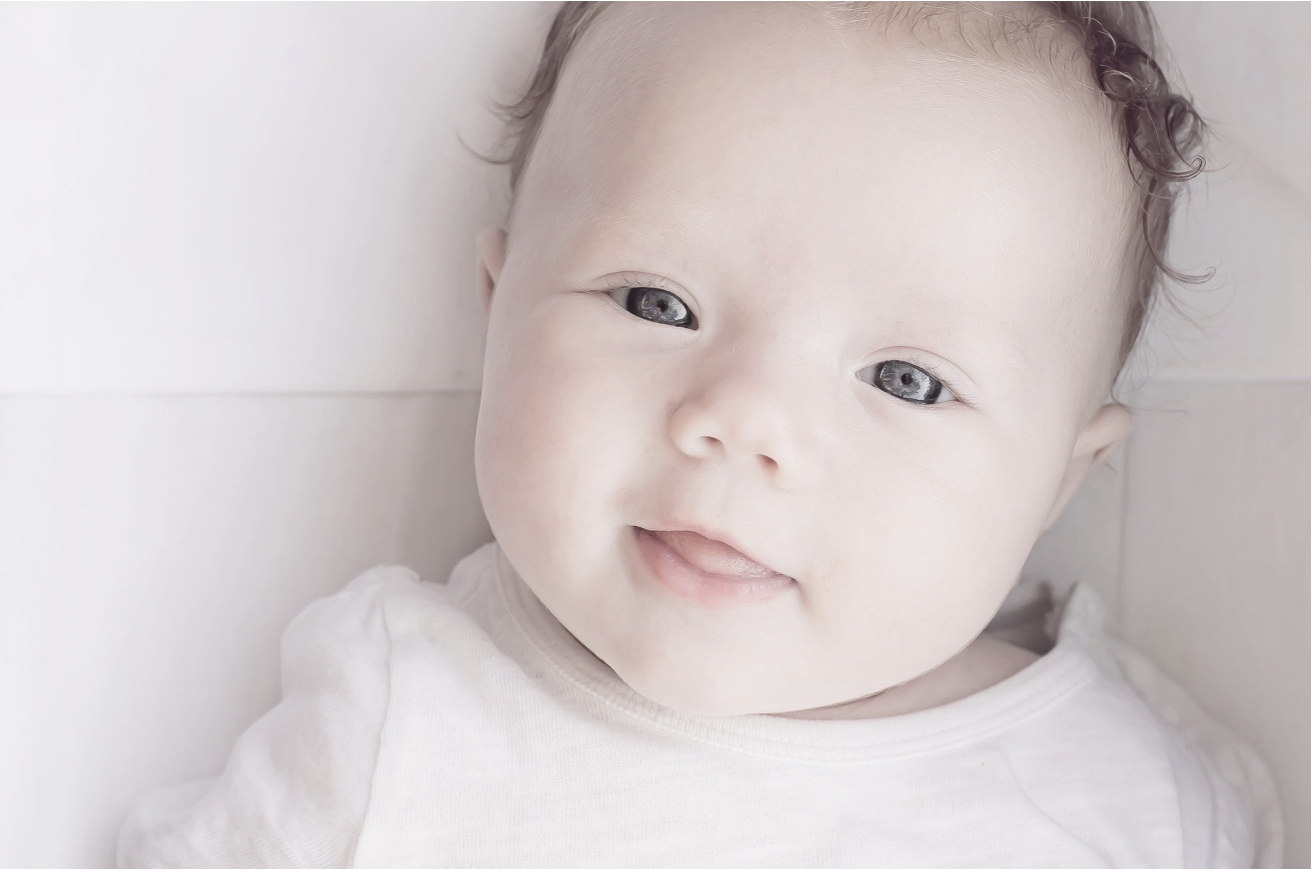
You may have heard the strange medical term “torticollis” from your pediatrician, neighbor, or friend. Frankly, it can be overwhelming and quite confusing to understand. In this post, we will review what torticollis is, reasons why babies may develop a torticollis, what parents can look for if they have concerns, associated impairments if left untreated, and tips on ways to prevent torticollis.
What is torticollis?
The term torticollis is Latin for “twisted neck”. Congenital muscular torticollis (CMT) describes the posture of the head and neck caused by shortening or tightness of the sternocleidomastoid (SCM) muscle. This rope-like SCM muscle starts at the collarbone and sternum and inserts into the skull behind the ear. When this muscle contracts or is tight, it will cause the head to tilt towards the side of the muscle and rotate away from the involved SCM muscle. With this tightness, weakness on the opposite side of the neck may result. A torticollis is named for the side of the involved SCM muscle, either right or left.
What causes torticollis?
There is little agreement on what causes CMT. The most widely accepted theories include a difficult delivery requiring use of a vacuum or forceps and unusual positioning inside the uterus. Other risk factors for CMT include large birth weight, male gender, breech position, multiple birth, a primiparous (pregnant for the first time) mother, difficult labor and delivery, nuchal cord, and maternal uterine abnormalities.
What will a torticollis look like?
A baby with torticollis may present with the following:
- Tilt their head in one direction
- Prefer looking at you over one shoulder rather than turning to follow you with his or her eyes
- If breastfed, he or she may have trouble breastfeeding on one side or prefer one breast only
- Have difficulty turning his or her head in one direction
- Some babies with torticollis will develop a flat spot on their head (plagiocephaly) caused by lying with their head consistently turned to one side
- A small lump or “ropey” knot may also be felt in the neck due to a tight and tensed muscle.
What can happen if a torticollis is left untreated?
An infant with CMT will be unable to have symmetrical movement of their head due to range of motion (ROM) and strength imbalances. If left untreated, associated impairments include jaw asymmetries, ear displacement, facial asymmetries, plagiocephaly, scoliosis (a curved spine), pelvic deformities and movement patterns that may affect normal development.
What can you do?
If you have concerns that your child has torticollis or plagiocephaly, schedule an appointment with your pediatrician. Your doctor may teach you stretches and strengthening exercises to practice at home. They may also suggest taking your baby to a physical therapist (PT) for treatment. The skull is most malleable and with rapid brain growth during the first 3 months of life. This brain growth slows around 5-6 months. The sooner you address torticollis and plagiocephaly (especially before 6 months), the better and faster the outcomes!
While it is best for your baby to sleep on their back, incorporating various positions during supervised and awake playtime is great for strengthening his or her neck muscles. This includes tummy time, side-lying, and supported sitting. If your baby has a flat spot on their head, these positions can also help by relieving pressure off this area. You can do tummy time on the floor, on your chest, or even across your lap! Encourage your child to use their neck muscles to follow you or a toy with their eyes and head, especially turning their head to the side they least prefer. Start by working on this for 10-15 minutes total each day, gradually increasing as your child tolerates more.
Another good way to encourage your baby to turn their head to their least preferred side would be to modify their room environment. This may include positioning their crib next to a wall rather than in the middle of their room. This will encourage your baby to use their weaker neck muscles to turn their head away from that non-exciting wall in order to look at whatever is interesting in their room.
Questions or concerns?
If you have questions or concerns about your child potentially having torticollis or plagiocephaly, please contact us at info@playworkschicago.com or 773-332-9493.
Elle Faerber, PT, DPT
Physical Therapist
References: Campbell, S. K., Palisano, R. J., & Orlin, M. (2012). Physical therapy for children. Saunders.
“Infant Torticollis.” Home – Johns Hopkins All Children’s Hospital, www.hopkinsallchildrens.org/Patients-Families/Health-Library/HealthDocNew/Infant-Torticollis.
Photo Credit: Photo by Pexels at pixabay.com
